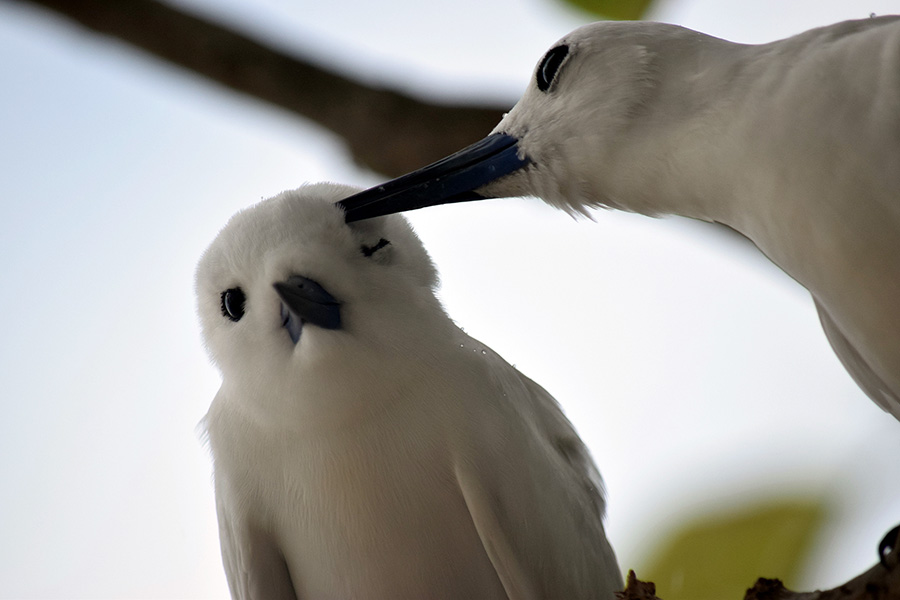
When I arrived on Cousin for the first time and took my first step on the Island, I was impressed by the amount of birds flying over my head, sitting in nests on the trees and on the ground. With this first step I knew that there will be many things for me to discover on the Island. And I was right.
The days were busy and sometimes very exhausting, but every day I got the chance to explore a tropical world which was completely new for me. Yan, the project coordinator and Claire, the science officer shared their knowledge about the ecosystem, the conservation methods and the fascinating species on the Island.
During my stay on the Island I worked a lot with the Seychelles magpie robins. This species was very close to extinction, with only 25 birds surviving on Fregate Island. It is great to see the success of the recovery program, which included establishment of new populations on islands like Cousin. Due to conservation efforts, today over 50 birds can be found in different territories on Cousin. Each bird has an individual combination of colour rings on its legs and a ring with an individual number, called SAF ring. One of my tasks was to take pictures of the SAF ring for a new database. Sometimes it was very hard to climb over steep rocks, deep ferns and to wait in the middle of a big mosquito swarm for a successful picture. Often I asked myself what I was doing in the middle of an endless forest full of mosquitos. Most of the times I was rewarded not only with a successful picture of a SAF ring number, but with many great observations of the magpie robins. My understanding of their behaviour grew. After some days I knew some of the individual birds. It was a great feeling to hear them singing, watch them mate or to see them proud with a fat morsel in the beak or to find an egg during the nest box check. Every time I was in the field, I discovered something new in their territories. The most exciting moment was to see a bird building a nest in a territory where another female already occupied a nest. I understood that there were still many things waiting to be discovered.

Cousin also offered me other discoveries every day: Hermit crabs fighting for their shell houses, a White-tailed tropicbird chick trying to make its way to the ocean, Seychelles blue pigeons drunk from over consumption of ficus fruits, a White tern chick losing its fish to the skinks, fighting White-tailed tropicbirds, White tern couples in the sunset, migratory birds on the beach, turtles in the water during snorkelling trips as well as dolphins, lemon sharks and rays close to the shore, fruit bats coming after the sunset from Praslin to feed on Cousin, shearwaters howling during night censuses, a flock of birds in the evening coming back to the Island after a day at sea. It was a wonderful experience to see a Hawksbill turtle on the beach going back to the sea after trying to find a suitable nesting place. All these impressive observations helped me once more to understand the functions of our fascinating ecosystems and the importance of conserving them. I’ve learned once more to appreciate all those little things in our world.
I also discovered a new culture on the Island. I’ve learned much about Seychelles while working and spending my free time with the wardens. At this point a great thanks to the wardens: You are doing a great job for the conservation work on Cousin Island!
By Alina Domass

